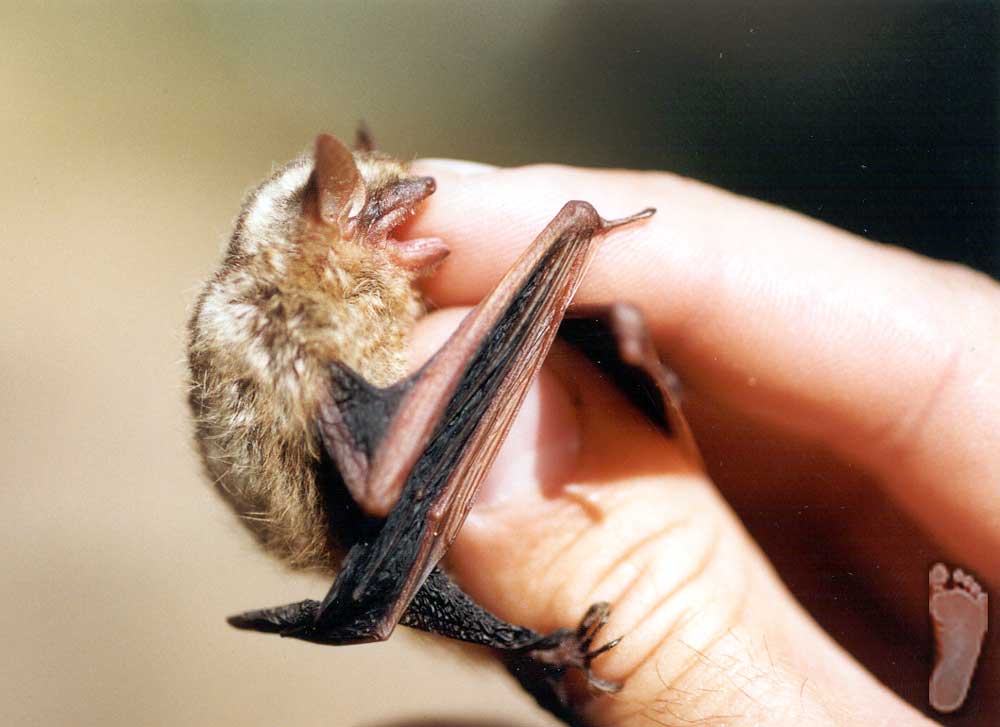
Researchers have developed ultrasonic whistle-like pulse generators to help bats and other wildlife steer clear of wind turbines.
Biologists at Texas A&M University are partnering with scientists at the University of Massachusetts Amherst at the interdisciplinary intersection of energy research and wildlife protection in a federally funded project to design and manufacture ultrasonic, whistle-like pulse generators to help bats and other wildlife steer clear of wind turbines.
Michael Smotherman, an associate professor in the Department of Biology and one of the country’s leading authorities on bat behavior, is overseeing Texas A&M’s role in the collaboration. The two-year, $312,500 project is funded by the U.S. Department of Energy and the Massachusetts Clean Energy Center as part of a broader Office of Energy and Efficiency initiative to protect wildlife at wind energy plants.
“We hope that by developing and refining this technology we can promote the development of sustainable wind energy while mitigating these important negative impacts on North American bat populations,” Smotherman said.
Wind energy is one of the fastest growing sources of alternative energy. In the past decade, Smotherman notes, it has been estimated that between 600,000 and 900,000 bats each year are accidentally killed by the spinning turbine blades, primarily because bats fly at night and rely on echolocation for navigation, as opposed to sight.
To prevent bats from flying too close to the turbines, engineers at UMass Amherst are designing devices that will mimic the natural ultrasonic pulses of bat calls. Similar to a whistle, the devices will be constructed with 3D printing technology and will closely resemble the functional anatomy of a bat larynx.
Because the whistles are relatively tiny, Smotherman says they can be mounted on the blades without impeding the function of the turbines. In addition they will require no electricity, given that they will be powered by the air pressure generated by the moving turbine blades. As the speed of the blades increase, the pulses generated by the whistles will become faster and louder.
“The intention is to create a warning sound that can alert the bats to the presence and movements of the blades,” Smotherman said.
Once the whistles are constructed, they will be shipped to Smotherman’s laboratory at Texas A&M, where the group will evaluate them in a series of behavioral tests with Mexican free-tailed bats to see if the whistles can reliably deter the bats from flying toward or landing on a target destination. Smotherman anticipates the testing of the whistles will begin later this fall and conclude by the summer 2016 to allow for any fine-tuning the whistles might require in the project’s final stages.
“The point is to establish whether or not the whistle noises can effectively alter the bats’ flight paths,” Smotherman said. “There is definitely some concern that the whistles might accidentally attract bats to windmills, since sometimes bats interpret the sounds of other bats as an indication that another bat has found food nearby and will fly there. So, the behavioral tests are critical to deciding whether or not we go forward with testing the whistles on actual windmills.”
If the whistles prove to be functional with the free-tailed bats, Smotherman says the next step would be to design whistles for a multitude of species. Because different types of bats inhabit many parts of the world, he says it eventually would be necessary to construct different whistles to emulate a variety of bat larynges to optimize their effectiveness.
“I think it’s a great opportunity to highlight this positive interface between biology and engineering,” he said. “It is important for people to know about this project because it shows that results emerging from our prior studies of bat biosonar and communications can have very tangible translational benefits to society.”
Smotherman, who joined the Texas A&M faculty in 2004, was studying auditory physiology as a postdoctoral fellow at the University of California, Los Angeles when bats and their communication processes first caught his attention. Bats previously had been used as a model in auditory processing, but Smotherman decided to change course at the time when he realized that much less research had been done on their impressive vocal control.
“Bats are very vocal animals, and the parts of their brain that control their voice are much larger proportionally, relative to other animals,” Smotherman said. “Ultimately in my lab, we want to learn how specific brain circuits are interpreting and producing their communication sounds. Understanding these functions has important medical purposes for us.
“Once you get used to them, they’re really not that different from other small animals.”
For more information on the Smotherman Lab and their work with bats, visit http://www.bio.tamu.edu/USERS/
About Research at Texas A&M University
http://research.tamu.edu
Filed Under: News, Projects, Safety




